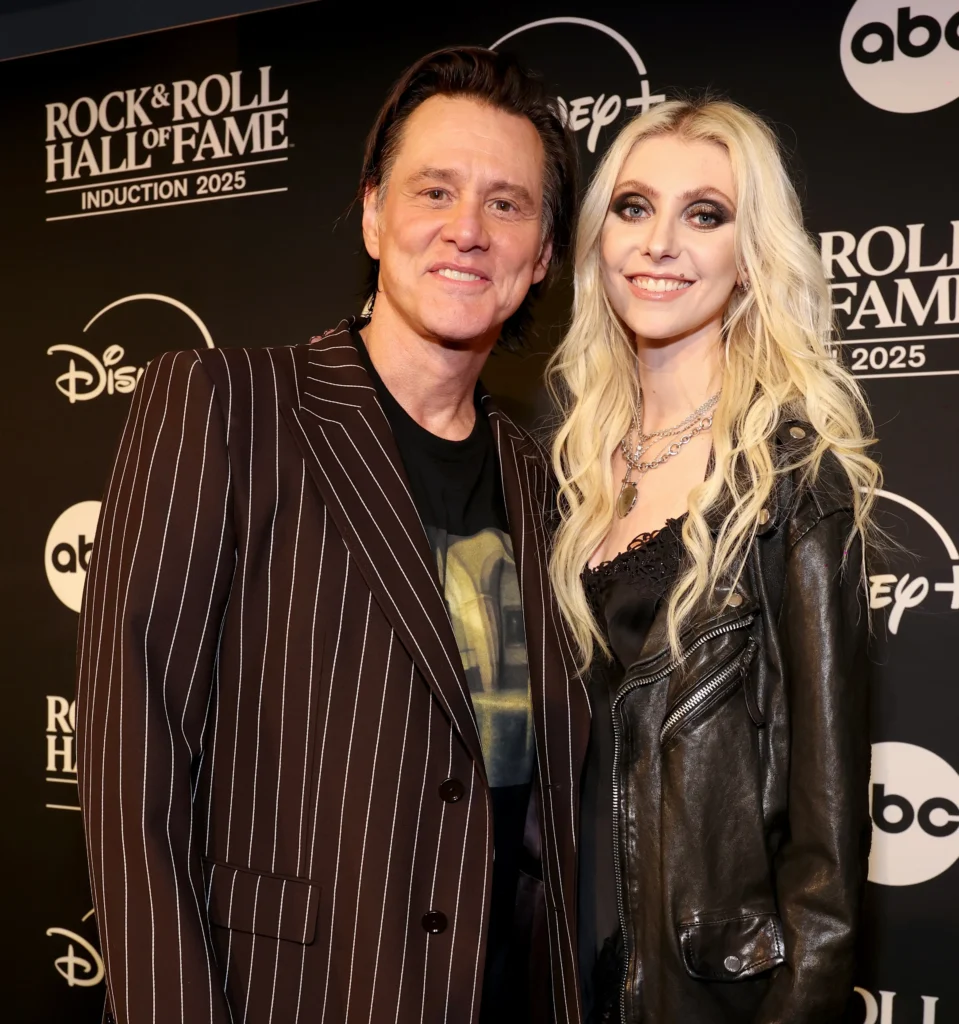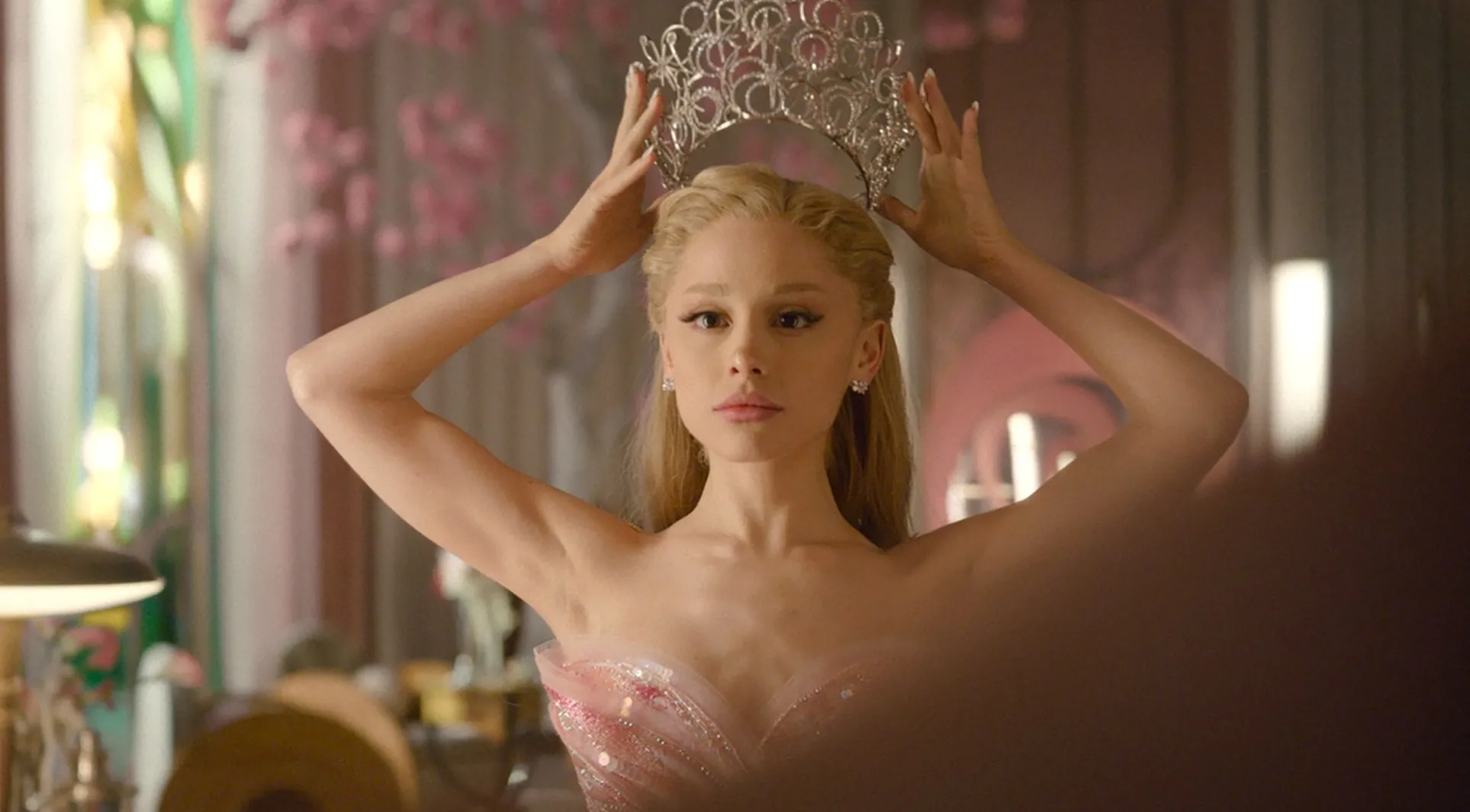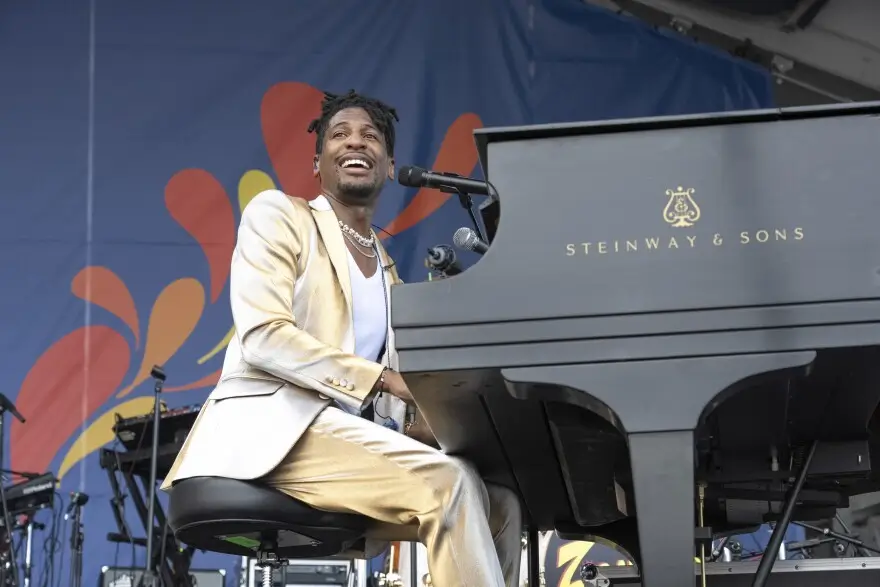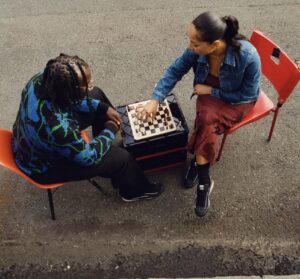For a generation that grew up quoting lines, collecting the green-tinted DVD, and replaying the Whoville choir scene every December, the reunion of Taylor Momsen and Jim Carrey strikes like a festive lightning bolt. Twenty-five years after the release of How the Grinch Stole Christmas, a film that forever merged holiday spirit with high-budget fantasy, two of its most memorable icons found themselves standing face-to-face again. And this time, the world was watching with the kind of nostalgia reserved for movies that never really leave you.
The reunion, casual in atmosphere yet monumental in symbolism, was enough to reinvigorate an entire cultural memory. For Momsen, who today fronts the internationally touring rock band The Pretty Reckless, the moment was both personal and poetic. For Carrey, the film remains one of the most transformative roles of his career, requiring full-body prosthetics, expressive athleticism, and a comedic intensity that became the backbone of the movie’s identity. Bringing these two figures back into the same frame is a generational event—one that bridges past and present through the long arc of two careers that grew, evolved, and twisted in entirely different directions before converging once more.
What makes the reunion remarkable isn’t simply the passage of time. It is the contrast, the evolution, and the sheer cultural durability of a film whose emotional center rested on the unexpected bond between an oversized green misanthrope and a wide-eyed girl whose kindness changed his world. Seeing those two energies collide again feels like a cinematic echo resurfacing twenty-five years later, reframed through maturity, artistry, and lived experience. And for Momsen, the moment triggered an outpouring of reflection, celebration, and gratitude—both for the film that launched her career and for the actor whose performance shaped her earliest understanding of what storytelling could be.
show
Momsen’s response to the reunion has been described as “surprisingly tender,” but tenderness has always been at the heart of her relationship with The Grinch. She has spoken for years about how the film shaped her childhood, not simply because it introduced her to the world as Cindy Lou Who, but because it taught her the values of empathy and emotional realism within a fantastical world. Carrey’s portrayal of the Grinch gave her an up-close view of how deeply a performer could commit to a character, how transformative an actor’s process could be, and how profoundly a role could resonate with audiences.
Encountering him again—no longer as a child looking up at a mythical creature but as an adult looking across at a legendary performer she once shared the screen with—naturally created an emotional collision. Momsen has expressed a kind of disbelief wrapped in affection, noting that seeing Carrey in person again stirred memories from a time when filmmaking felt like magic, sets felt like playgrounds, and the boundary between childhood and cinema was porous enough that stepping into Whoville felt indistinguishable from stepping into a dream.
The reunion, then, is more than a fan-service moment; it is a bridge between eras. It shows a former child actor confronting her origins with pride rather than distance. It shows an adult recognizing the foundation upon which her unconventional career was built. And it shows a woman who reinvented herself—musically, aesthetically, personally—finding her younger self reflected in someone she once viewed as a surreal, larger-than-life force.
from cindy lou who to rock icon
Part of what makes this reunion so compelling is the magnitude of Momsen’s transformation over the past two decades. She is no longer the timid, bright-eyed girl in the sparkly Whoville costume singing “Where Are You Christmas.” She is the frontwoman of a globally recognized hard-rock band, commanding festival stages, wearing platform boots, and channeling a fierce musical identity that draws from punk, alt-rock, and grunge lineages.
Her evolution is one of the most dramatic in modern pop culture: a child star who not only escaped the typecasting of early fame but actively reinvented her narrative through music, autonomy, and self-determination. The contrast between “Cindy Lou Who” and “Taylor Momsen: Rock Goddess” is so stark and so iconic that seeing her interact with Carrey 25 years later becomes a visual symbol of growth, metamorphosis, and the resilience of artistic identity.
Momsen herself has acknowledged this duality. She often speaks about how the world views her childhood role with a kind of unshakeable fondness, while she views it as both a beginning and an anchor. The reunion with Carrey taps directly into this split identity. It is a moment that unites her past with her present, giving the world a glimpse of the person who traveled from Whoville straight into the global rock scene without losing her sense of humor or her sense of history.
The meeting also highlights Carrey’s own transformation over two decades. Known originally for his explosive physical comedy and rubber-faced expressiveness, Carrey later became associated with more introspective roles and philosophical commentary. The reunion brings together two artists who have each moved away from the roles that first defined them, yet still carry those characters as essential facets of their cultural DNA.
why
The public reaction to Momsen and Carrey reuniting illustrates something profound about shared film memories. Holiday movies, perhaps more than any other genre, create emotional rituals. They are watched annually, passed through families, revisited as comfort objects, and woven into personal histories. When a movie like The Grinch becomes a generational staple, the characters cease to be fictional; they become cultural companions.
Seeing Momsen and Carrey interact again brings that emotional architecture crashing back into place. Fans experience a sense of continuity across their own lives: the first time they saw the movie as children, the middle years when they watched it as teenagers rolling their eyes at its sentimentality, the adult years when it became part of their holiday traditions once more. The reunion links all those phases together, turning the passage of time into a kind of communal nostalgia.
This is why the internet exploded. It wasn’t merely that two celebrities were photographed together. It was the sensation of one’s own childhood being resurrected. It was the reminder that movies endure not because of their sets or costumes but because of the ways they carve emotional grooves into memory. Momsen’s reaction amplified that feeling. She wasn’t performing or promoting anything; she was simply a person revisiting a meaningful chapter of her life, wide-eyed with the same sincerity she brought to Whoville decades earlier.
25 years later
Twenty-five years is a long time in entertainment, long enough for an entire generation to grow up, graduate, enter the workforce, and revisit childhood films with a new level of self-awareness. The Grinch reunion arrives at a moment when early-2000s nostalgia is at its cultural peak. Y2K fashion has returned. Pop-punk has resurfaced. Early-internet aesthetics are being re-examined. And millennial icons are reconnecting with audiences who now view them through the lens of adulthood.
The reunion slips perfectly into this cultural wave. It feels like a celebration not only of the film but of the era that produced it. For fans who remember the original theatrical release, seeing the adult version of Cindy Lou Who with her former co-star is almost surreal—like a childhood book briefly reopening itself to reveal a new chapter.
Momsen’s reaction underscores this emotional significance. Her mixture of awe, warmth, and humor mirrors the audience’s own feelings. She acknowledges the strangeness of time, the beauty of reconnecting with one’s origins, and the comfort of knowing that the roles which shaped her youth still resonate with millions.
The meeting also highlights the unusual longevity of The Grinch. Many holiday films become staples, but few generate the level of ongoing fascination and cultural relevance that Ron Howard’s adaptation achieved. Carrey’s performance was lightning-in-a-bottle; Momsen’s role added the emotional spine. Their reunion acknowledges the film’s legacy as a work that transcended its genre and became a permanent fixture in the seasonal rituals of families worldwide.
fin
While there is no indication of a future collaboration or film revival, the reunion sparks discussion about the nature of legacy in popular culture. Momsen and Carrey will forever share a creative thread, regardless of where their careers continue to go. Their connection is part of cinematic history, and reunions like this remind the world that some stories never really end—they simply evolve.
Momsen’s reaction suggests a deeper truth: that artists, too, feel the weight of nostalgia. They, too, revisit their pasts with affection and curiosity. They, too, understand that the roles they played continue to live in the imaginations of millions. The reunion humanizes both performers, stripping away the glossy veneer of celebrity and revealing the emotional continuity between childhood creativity and adult artistry.
And for the culture at large, it is proof that some films don’t just entertain—they live inside us.
No comments yet.









